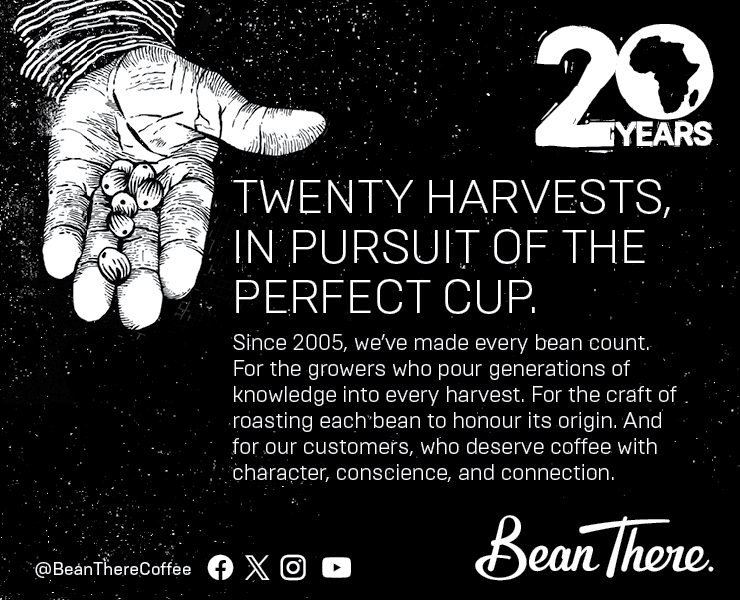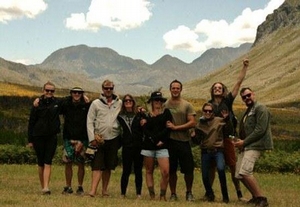 The team assembles. The right hand side seems a tad more excited.
The team assembles. The right hand side seems a tad more excited.
 The region burnt last year. The flowers in the foreground are part of the new growth. Oudebosch forest survived and can be seen in the kloof at the top. The section on the right hand slope didn't burn. Left alone for nearly a century, that piece may become like the forest above it, or like Orangekloof from the last episode.
The region burnt last year. The flowers in the foreground are part of the new growth. Oudebosch forest survived and can be seen in the kloof at the top. The section on the right hand slope didn't burn. Left alone for nearly a century, that piece may become like the forest above it, or like Orangekloof from the last episode.
 Midday sun with rolling clouds made challenging lighting for photography. Sometimes you just need a different angle. And some luck. The view from underneath a clump of Everlastings (Helichrysum).
Midday sun with rolling clouds made challenging lighting for photography. Sometimes you just need a different angle. And some luck. The view from underneath a clump of Everlastings (Helichrysum).
 The same trick with Watsonia. These are common after a fire, but have also been highly visible on Cape Town's road verges recently.
The same trick with Watsonia. These are common after a fire, but have also been highly visible on Cape Town's road verges recently.
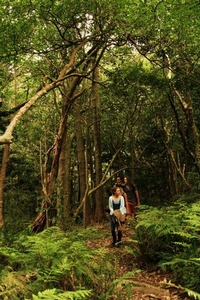 Soon we leave the fynbos and enter the forest.
Soon we leave the fynbos and enter the forest.
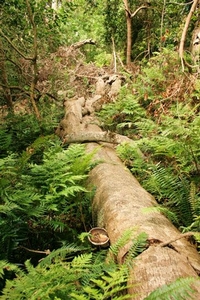 'If a tree falls in a forest...' so begins a philosophical question. But after the crash, many things happen quietly. This tree opened up the canopy allowing light to hit the forest floor and encourage new growth. A tree fungus, bottom left, is quick to grow on the dead tree and so accelerates the decay, and brings the elements of the tree back into the soil.
'If a tree falls in a forest...' so begins a philosophical question. But after the crash, many things happen quietly. This tree opened up the canopy allowing light to hit the forest floor and encourage new growth. A tree fungus, bottom left, is quick to grow on the dead tree and so accelerates the decay, and brings the elements of the tree back into the soil.
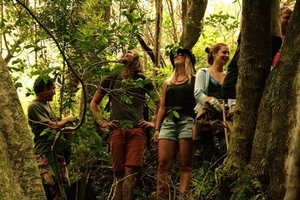 Don't forget to look up. There's plenty of birdlife above in the canopy.
Don't forget to look up. There's plenty of birdlife above in the canopy.
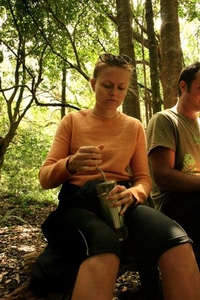 It's summer, but it's still cool in the forest. We sit down for a snack and a brew. Laura gets the grind on.
It's summer, but it's still cool in the forest. We sit down for a snack and a brew. Laura gets the grind on.
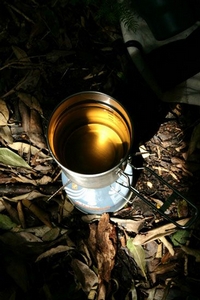 The leaf litter at the base of the stove is what will eventually become the tannins that colour the water. The water in the pot was collected at the bottom of the valley. Yet, the water in the stream next to our rest stop near the top wasn't nearly as stained. It would be interesting to brew with the different water and see if there's a noticeable difference.
The leaf litter at the base of the stove is what will eventually become the tannins that colour the water. The water in the pot was collected at the bottom of the valley. Yet, the water in the stream next to our rest stop near the top wasn't nearly as stained. It would be interesting to brew with the different water and see if there's a noticeable difference.
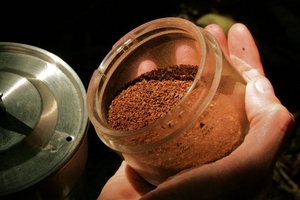 We're making 'cowboy coffee', or more perhaps more appropriately; boere koffie. It requires just grinds and a pot. We went rougher with the grind to assist the settling of it. A tall pot or billy can also helps. Beans wise, we were using a leftover blend of whatever we had lying around.
We're making 'cowboy coffee', or more perhaps more appropriately; boere koffie. It requires just grinds and a pot. We went rougher with the grind to assist the settling of it. A tall pot or billy can also helps. Beans wise, we were using a leftover blend of whatever we had lying around.
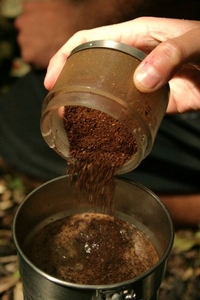 With such direct heat on a thin pot, it's easy to control the boil. We turned it right down before adding the grind and gave it 2-3 mins on the boil. Take it off, pour gently to trap most of the grinds in the pot, and leave to cool.
With such direct heat on a thin pot, it's easy to control the boil. We turned it right down before adding the grind and gave it 2-3 mins on the boil. Take it off, pour gently to trap most of the grinds in the pot, and leave to cool.
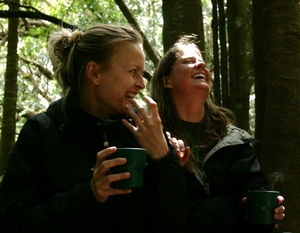 The results got an enthusiastic reaction. "Nice long aftertaste," muses Laura, while Amy just loses it. Seriously, we were impressed by the results from this experiment using only the basics. We never picked up any grinds in our teeth. They were there, but by the time we reached them, the cool air had chilled the coffee off and so the last few sips aren't that great anyway. We'll definitely be doing this more often.
The results got an enthusiastic reaction. "Nice long aftertaste," muses Laura, while Amy just loses it. Seriously, we were impressed by the results from this experiment using only the basics. We never picked up any grinds in our teeth. They were there, but by the time we reached them, the cool air had chilled the coffee off and so the last few sips aren't that great anyway. We'll definitely be doing this more often.


.png)




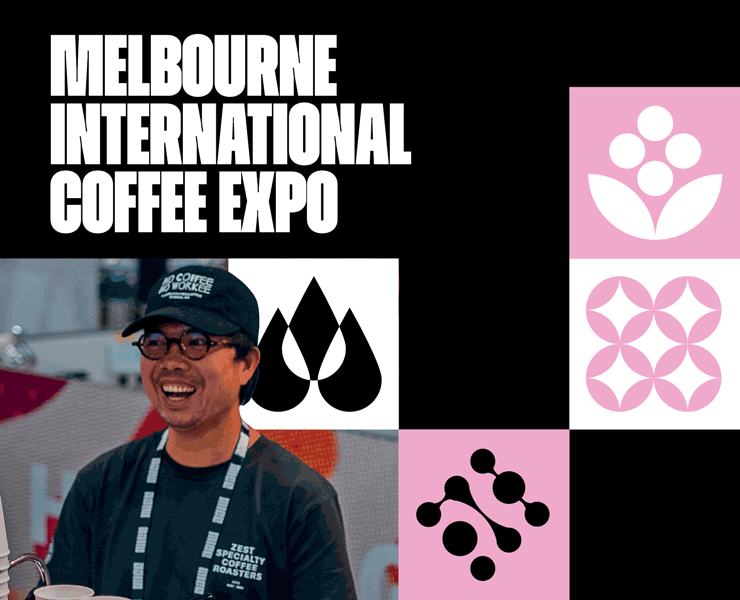
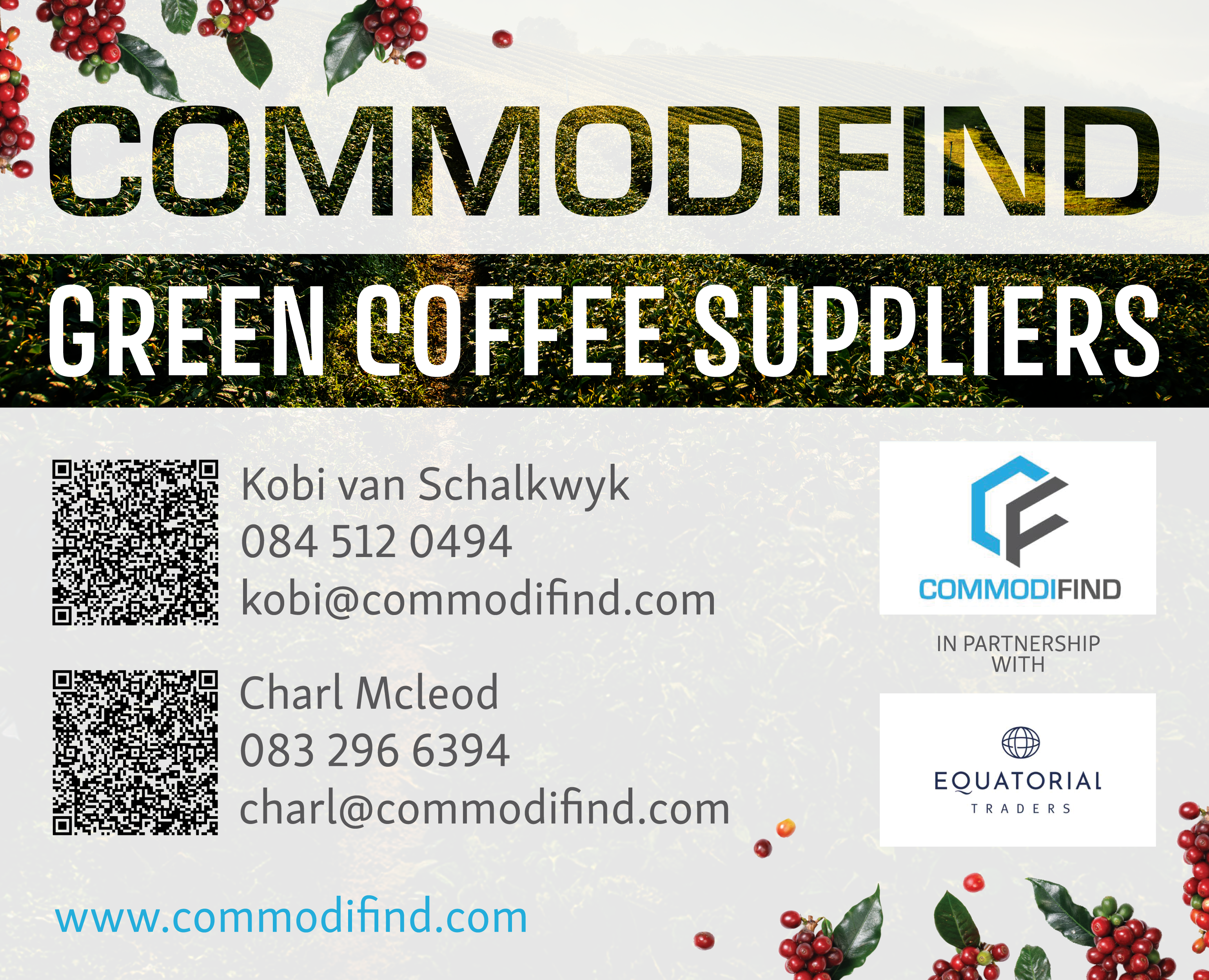


.jpg)






